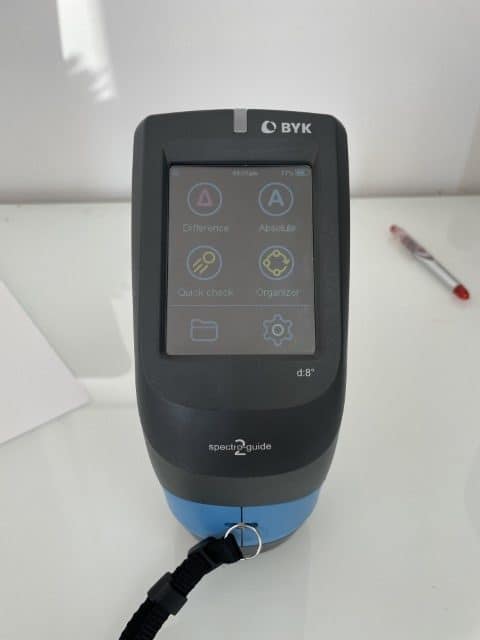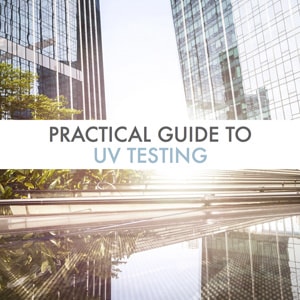ASTM D2244
Standard Practice for Calculation of Color Tolerances and Color Differences from Instrumentally Measured Color Coordinates
ASTM D2244 is a standard test method for calculating color differences from instrumentally measured color coordinates. The sample color is measured and the results can be expressed on the L, a, b or x, y, z scales. This test method is often used in conjunction with additional accelerated aging test methods related to UV testing such as ASTM G155, ASTM G154, ASTM F1515 and many other material testing methods. Micom Laboratories offers the ASTM D2244 test as part of paint and coating testing services.Color measurements are often required with other appearance factors such as gloss (tested using the ASTM D523 standard), haze, distinctness of image (DOI) and reflected image quality. Indeed the sample texture, may affect the correlation between the magnitude of a measured color difference and its commercial acceptability.

Use and factors to be considered
The color difference between a reference and an aged test specimen, as measured using the ASTM D2244 test, are determined using a colorimeter. Typically two color scales are used for color measurement: tristimulus X, Y, Z or the L, a, b scale. Color differences among specimens should be compared only when they were measured on the same color scale system.
A simplified approach for gaging color shifts uses “Delta E”:
Generally speaking the human eye can perceive a Delta “E” greater than or equal to 2.3. However, for quality control purposes, it is necessary to know not only the magnitude of the departure from standard, but also the direction of this departure. Information on the direction of a color difference is easily included by giving the three instrumentally determined components of the color difference.
Typical Experimental parameters
ASTM D2244 method does not cover preparation techniques. However, generally speaking, samples should be clean, dry and free of deposits. At the minimum, we need a flat, homogeneous area, the size of a nickel.
The following video is about the ASTM D523 Specular Gloss & ASTM D2244 Color Difference Calculation tests. The ASTM D523 measures the capacity of a surface to reflect light while the ASTM D2244 calculates the color tolerances and small colours differences between opaque surfaces.
We take care of testing from start to finish
So you can focus on what you do best
We get it, we're the only ones in the room excited by testing.
That's why we've fine-tuned every step of the testing process to provide you with
a fast and reliable service at a cost that will keep you coming back.
This is the Micom promise.
We take care of testing from start to finish
So you can focus on what you do best
We get it, we're the only ones in the room excited by testing.
That's why we've fine-tuned every step of the testing process to provide you with
a fast and reliable service at a cost that will keep you coming back.
This is the Micom promise.
We take care of testing from start to finish
So you can focus on what you do best
We get it, we're the only ones in the room excited by testing.
That's why we've fine-tuned every step of the testing process to provide you with
a fast and reliable service at a cost that will keep you coming back.
This is the Micom promise.
Other test methods related to ASTM D2244
For additional test methods related to ASTM D2244 we invite you to learn more about Coating testing, Material testing as well as Accelerated aging testing.
If you have any questions about the ASTM D2244 test or if you would like to speak to a material testing specialist about your custom testing requirements, we invite you to contact us today. it will be our pleasure to answer your questions and review your testing requirements.
We also invite you to download our PDF on the true color measurement: What is the difference between the “true” color of an item and its “perceived” color (by the human eye)?
We also invite you to download our brochure to learn more about our Paint, Coating and Polymer testing services.
Practical UV Testing Guide
Sunlight exposure can have harmful impacts on carbon-based
materials such as coatings, polymers, textiles, and many others.
Learn more about our in-laboratory UV testing process in this guide.


